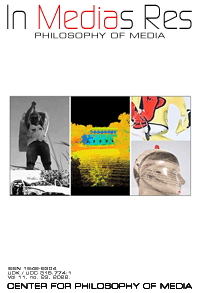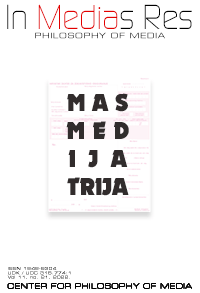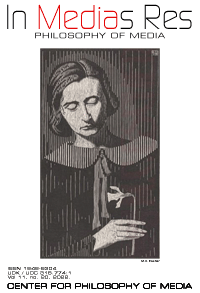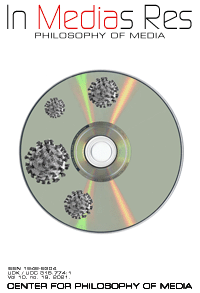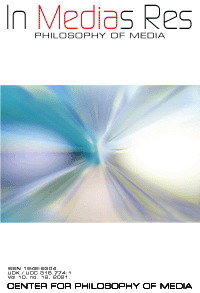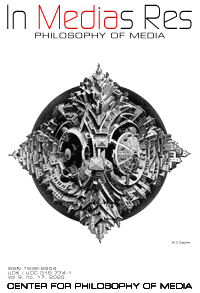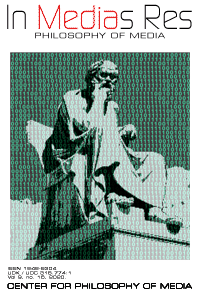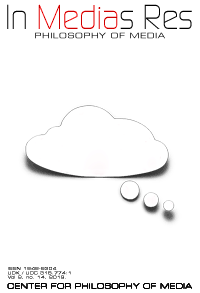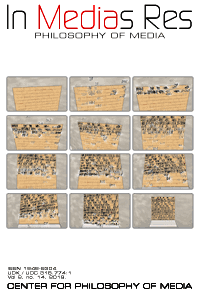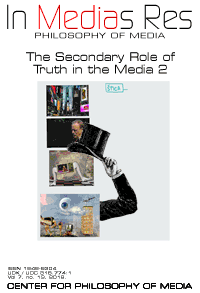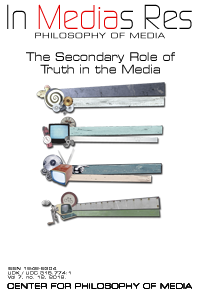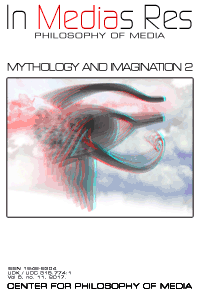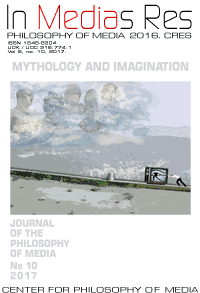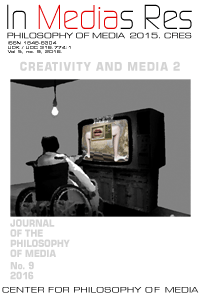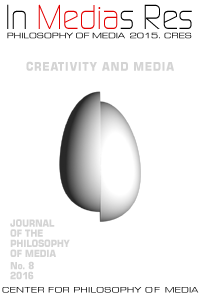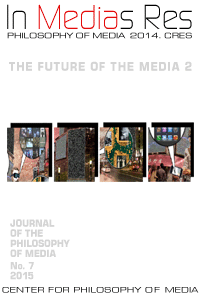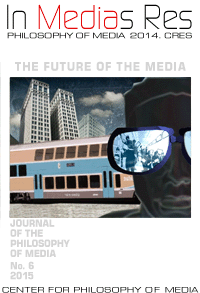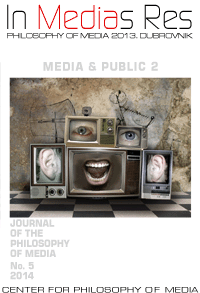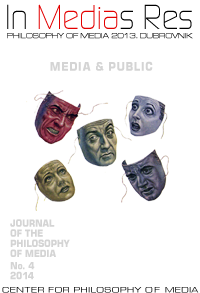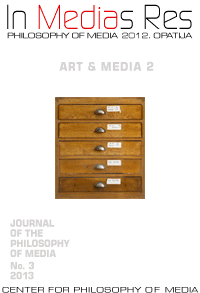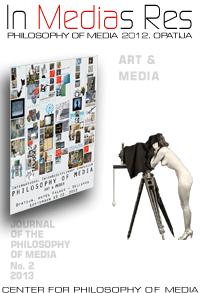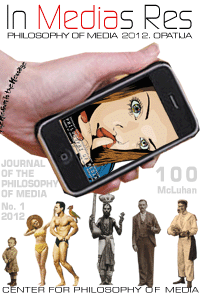Instructions
EDITORIAL ETHICS OF IN MEDIAS RES JOURNAL
The journal "In medias res" stands as the distinctive publication addressing the pressing issues surrounding the philosophical examination of media and the self-reflection of philosophy within a media framework. This interdisciplinary approach scrutinizes all aspects of media mediation. In the realm of social sciences, it delves into media and its mediating influences, while simultaneously transcending these boundaries through humanistic philosophical reflection. Consequently, the journal provides a multi-level contemplation of the fundamental problem facing contemporary societies – that of media and its mediations.
This pivotal issue extends beyond the mere interaction between media and human experience or the impact of advanced technological devices on individuals, societal structures, and the distinct human dimension. It manifests as an ongoing introspection into the media's role in shaping thought, exploring the influence of dominant communication techniques, literacy, and information transmission on prevailing modes of thought and action throughout different epochs.
In the current era of copy-paste culture and the widespread accessibility of scientific texts through simplified dissemination techniques, the responsibility for each published text, down to every sentence, is paramount. Rigorous attention is dedicated to text analysis and verification, utilizing all available means to detect and prevent instances of plagiarism or self-plagiarism.
It is emphasized that texts containing plagiarized sections from other sources will not be accepted for publication. Authors, by submitting their work, affirm that it is an original publication, not concurrently submitted to other journals during the review process. The editorial board retains the right to unlimited reprint and reissue, and authors assert that no part of the text is plagiarized.
The journal operates without charging authors for the reception, review, or publication of their works. Manuscripts passing the initial editorial review undergo a double-blind review process, safeguarding the anonymity of both authors and reviewers. Submitted texts do not disclose information about the author/authors, ensuring that no discrimination occurs against texts, authors, or themes.
Comprehensive instructions outlining the guidelines for writing and publishing scientific texts within the journal are readily available to collaborators. Being an electronic journal, "In medias res" accommodates visual and auditory contributions in formats suitable for web posting. Audio and video components may integrate with the text or be presented separately. Shorter audio and video formats are recommended for technical reasons, and supplementary materials such as photographs and graphic sketches are encouraged. The PDF format exclusively contains text adhering to the journal's writing guidelines.
INSTRUCTIONS FOR REVIEWERS OF THE IN MEDIAS RES JOURNAL
The In medias res journal publishes previously unpublished scientific works only. The first in a series of tasks for the reviewer of the In medias res journal is to check whether this is really a new, original, previously unpublished work.
There are two reviewers, unknown to each other. By the same token the author of the text does not know who is reviewing the text, and the reviewers do not know whose text they are reviewing since this is a double-blind review, i.e. a process in which two reviewers independently reach their conclusions on the text without being aware of the identity of the author.
The reviewers are given forms in which they state their views on important segments of the text, and evaluate in which segments the work is satisfactory and what can, should or must be elaborated on and whether the text can and should go through further revision or whether it can be published or rejected in its existing form.
The journal does not pay for the reviews of texts. The editorial board trusts the scientific integrity of its contributing scientists and their will and wish to contribute with their work to the scientific excellence and scientific integrity of the Croatian academic community.
With the aim of simplifying the task of reviewing, the editorial board has prepared a form in which the reviewer first decides whether the text is in compliance with each of the individual dimensions of a scientific work. Of course, there is also space for commenting on the stated evaluation. In the final comment the reviewer points to the specificities of the text, particular reasons for its acceptance, rejection or request for additional work and particular information on the text which perhaps had not been requested in the reviewing form with questions, and which are relevant for evaluating the text.
The reviewer suggests the following options:
1. Original Article
(This is an original work introducing advances in the scientific area within which it operates, i.e. introduces scientifically verifiable, exhaustive, textually complete and stylistically perfected views structured in an original scientific article).
2. Preliminary Communication
(This is a well-planned work which however does not introduce complete research results but rather suggests and points to them. A preliminary communication as a rule lacks the final dimension of originality which keeps the text within the scope of the preliminary.
3. Review Article
This text provides a scientific analysis and presents results of its analysis but it also halts at this level of presenting and analysing theses, views and results. However, a review article also needs to include its original scientific dimension and share the author’s contribution.
4. Not eligible for publication
The reviewer may suggest that the work does not possess any qualities needed for a scientific work and should therefore not be published.
CITING SOURCES IN THE IN MEDIAS RES JOURNAL
The editorial board suggests instructions on citing as listed by the Croatian Philosophical Society.
The way of quoting
The editor s office recommends referencing by footnotes in a way that has been standard. The first reference to a work in a footnote should have the following form:
- [for books] John Rawls, A Theory of Justice, Harvard University Press, Cambridge (MA) 1971, p. 43.
- [for anthologies] Julie K. Ward (ed), Feminism and Ancient Philosophy, Routledge, New York – London 1996.
- [for journal articles] Hubert L. Dreyfus, „The Current Relevance of Merleau-Ponty s Phenomenology of Embodiment. Synthesis philosophica 19-20 (1-2/1995), pp. 35-50.
- [for a paper from an anthology or a chapter from a book] James Rachels, „Ethical Theory and Bioethics“, in: Helga Kuhse & Peter Singer (eds.), A Companion to Bioethics, Blackwell, Malden (MA) – Oxford – Carlton (VI) 2004, pp. 15 – 23.
- [for e-literature] Arne Naess, „Is It a Plus to Have a Definite Metaphysics in Common“, http://trumpeter.athabascau.ca/content/v.22.1special/9definite_metaphysics.pdf
Accessed on July 27, 2007.
If the title and subtitle of a cited paper or book are not already separated by a punctuation mark, in citing them the two must be separated by a full stop and the first letter of the subtitle must be written in a capital letter. For example:
- Hans Jonas, The Phenomenon of Life. Toward a Philosophical Biology.
- Yi Jungquing, „The Laborious and Painful Process of Emancipation. A Survey of the Last Ten Years of Chinese Philosophy“.
The footnote of an already and previously cited work should only contain the initial of the first name and the full surname of the author, the title of the work (book or article) cited and the relevant page numbers. For example:
- J. Rawls, A Theory of Justice, p. 120.
- H. L. Dreyfus, „The Current Relevance of Merleau-Ponty s Phenomenology of Embodiment“, p. 38.
In consecutive referring to the same work, the footnotes are only to contain the word „Ibid“ and the relevant page numbers, as in the example below:
- Ibid., p. 112.
The editor s office, naturally, accepts other standards of referencing provided that they are consistent throughout a text.


